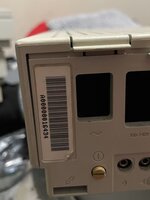Yep, that'd be the result I expected.
If using a NuBus Card, keep the IIsi system clock stock at 40MHz. I'm a bit surprised you don't get wonkiness with the 50MHz crystal can?
PDS cards may or may not work correctly. I'd not much expect an SE/30 form factor PDS Card to work correctly in a hot rodded IIsi. In DCaD Apple notes that some legacy 16MHz cards for the SE/30 may not be compatible the 20MHz Clock of the IIsi.
Is the IIsi's onboard Vampire Video kluge wonky at all given that 25MHz CPUCLK rate? Timings could be off for syncing with brain dead Apple fixed, silly resolution displays?

edit: this pretty much puts the last nail in the coffin of the
"Apple had intended it as a 25 MHz computer, but chose to scale back the speed to avoid cutting into IIci sales" (urban) LEM legend. Given the tightly knit, flexible NuBus/PDS expansion spec. for its development, the IIsi was obviously designed from the very start to be a 20MHz system. It just happened to use available parts from the eleven months earlier IIci design that were rated for that faster 25MHz CPUCLK.
Clock chipping the IIsi: Just don't do it, find an accelerator.




